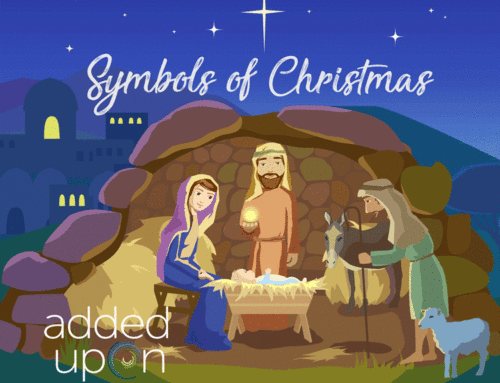“Wherefore seeing we also are compassed about with so great a cloud of witnesses, let us lay aside every weight, and the sin which doth so easily beset us, and let us run with patience the race that is set before us, looking unto Jesus the author and finisher of our faith…” (Hebrews 12:1-2)
Speeding Up
In the 1970s, the theme of the church was “lengthen your stride.” It was a call to hasten the Lord’s work of strengthening the stakes of Zion and increase its numbers. That seemed like warming up on the infield of a cushy track compared to today’s trends.
I don’t know if it’s accurate to say that the church is “speeding up,” but it sure feels like it. I don’t know if it’s because I have the vantage point of seeing changes throughout the years, or if things really are accelerating. But it seems to me as though we are being prepared more rapidly and thoroughly than ever for an endurance event on a course with obstacles we cannot yet identify.
Since the beginning days of the church’s restoration in the early 1800s, the saints spoke of being the generation to usher in Zion and the Second Coming. It’s easy to look back on them laugh at their apparent naivete, because as we (smugly) know (now), there’s no possible way it was going to happen back then.
Now? These days, the second coming appears to be much more imminent. Without commenting from a personal level about my perceived view of the decline of the world, the membership of the Church is definitely preparing for … well, something.
The 1980 Consolidated Schedule
I grew up on the schedule of Junior Sunday School on Sunday morning. The sacrament was passed to the primary children while we sat on uncomfortable and unpadded miniature versions of the wooden pews in the chapel. The adults attended Sunday School, and the sacrament was administered there too. Then later that day, after a several hour midday break, we returned for Sacrament Meeting where families met together and the sacrament was again passed, talks were given, and hymns sung.
From sunup to sundown, there were meetings to attend. My dad attended priesthood meeting in the morning-morning, before Jr./Sunday School. And during the week, I attended Primary for several hours in an afternoon once a week, and my mother attended Relief Society meetings during the week. Church attendance was a time-intensive undertaking.
When the consolidated 3-hour schedule came in March 1980, a heavy weight was lifted from that all-day meeting schedule.
In fact, freeing up time was at the center of this change.
“The purpose of the consolidated meeting schedule is (1) to reemphasize personal and family responsibility for learning, living, and teaching the gospel; and (2) to allow Church members more time for personal gospel study, for service to others, and for meaningful activities. The major objectives of the new schedule are to—
- “Help every Latter-day Saint home become a place where family members love to be, where they can enrich their lives and find mutual love, support, appreciation, and encouragement.
- Emphasize home-centered Sabbath activities.
- Make more flexible a weekday activity program for all members.
- Reduce the amount of travel by Church members and provide opportunities for family members to travel together and participate in Church activities.
- Conserve energy resources and reduce the nonessential costs required for members to participate in Church activities.”
(Emphasis added is mine. As we go through the timeline together, I will highlight other common themes.)
Changes throughout the Years: A Brief Timeline
It’s been nearly 40 years since that time-relieving schedule was introduced. Here’s a breakdown of major “changes” that we have been asked to implement or that have been announced since then. (This list is not comprehensive, and is heavily weighted in favor of my own memories and experience in the church.)
1980s – 1990s
1979 – 1981: A new LDS version of the King James Version of the Bible is introduced in 1979. This includes footnotes, a Topical Guide, chapter headings/summaries, and in-depth cross references to the other volumes of scripture used by the Church. Those editions of The Book of Mormon, The Doctrine and Covenants, and The Pearl of Great Price are released in 1981.
This project was started in 1972, and was an attempt to standardize the curriculum across the church. (For details on who was involved and the genesis and evolution of this project, see this article, which includes this gem: “One of the lighter moments of the work of this committee came when they were asked to write a progress report. Having labored over the alphabetical listings of the Topical Guide, the committee wrote: ‘We have been through Heaven and Hell, Love and Lust, and now we’re working toward Repentance.’”)
March 1980: Consolidated three-hour Sunday church block introduced.
1985 – 1994: President Ezra Taft Benson places heavy emphasis on individuals consistently studying the Book of Mormon, calling it the keystone of testimony, the keystone doctrine of the Resurrection, and of our witness of Jesus Christ – our cornerstone. We are asked to “flood the earth” with the Book of Mormon.
And President Marion G. Romney said, “I feel certain that if, in our homes, parents will read from the Book of Mormon prayerfully and regularly, both by themselves and with their children, the spirit of that great book will come to permeate our homes and all who dwell therein. The spirit of reverence will increase; mutual respect and consideration for each other will grow. The spirit of contention will depart. Parents will counsel their children in greater love and wisdom. Children will be more responsive and submissive to the counsel of their parents. Righteousness will increase. Faith, hope, and charity—the pure love of Christ—will abound in our homes and lives, bringing in their wake peace, joy, and happiness” (Ensign, May 1980, p. 67).
September 1995: “The Family: A Proclamation to the World.”
October 1997: President Hinckley announces a plan to build smaller temples, thus allowing more temples to be built in more areas of the world. Temple building increases exponentially. (If my calculations are correct, temples increased from 48 to 124 during President Hinckley’s tenure as president of the church.)
Early 2000s
January 2000: The First Presidency and Quorum of the Twelve Apostles relase, “The Living Christ.”
April 2000: The Conference Center opens. It accommodates roughly 21,000 seats in the main auditorium.
October 2000: The 100th operating temple (Boston) is dedicated.
2001: The Perpetual Education Fund is announced, providing opportunities for members in areas of the world to gain educations they may not be able to on their own. This is a step toward strengthening individuals’ abilities to stand out in their communities and families.
Now It Really Picks Up
Up to this point, there’s nothing very remarkable or alarming. It’s all rather status quo; after all, we expect the church to progress and make changes. Some of these are good for society (PEF), and some are good omens for a worldwide church expanding into remote areas (temples!).
Now this is when things really start moving.
2012 – 2018
October 2012: Change in missionary age announced. Young men can serve at age 18; young women at 19. (Note: this was a change mostly for US missionaries. Missionaries from other countries did often serve already at 18.)
2013: New youth curriculum introduced designed “to strengthen and build faith, conversion, and testimony.”
2015: Increased emphasis placed on better observance of the Sabbath Day. Elder M. Russell Ballard said, “Our whole desire is that throughout the Church, we focus our Sabbath day worship on the Lord.” And Elder L. Whitney Clayton said, ““Leaders are asked to help Church members focus on better observing the Sabbath day at church and at home.”
2017: New self-reliance program is implemented worldwide. It focuses on four areas: personal finance; building/growing your own business; get a better job; and higher education.
April 2018:
- Combined priesthood meetings/quorums for Elders and High Priests is announced.
- “New” ministering program introduced, and home and visiting teaching are discontinued. (“New” is in quotation marks if only because, as many people pointed out, and was acknowledged in the October Women’s session, the women were doing visiting teaching this way since forever.)
September 2018: The Mormon Tabernacle Choir changes its name to The Tabernacle Choir at Temple Square.
October 2018:
- President Nelson emphasizes proper and correct use of the name of the church: The Church of Jesus-Christ of Latter-day Saints.
- Two-hour church block introduced. Elder Quentin L. Cook reminded us it’s not just about going to church for “only” two hours now. “The purposes and blessings associated with this adjustment and other recent changes include the following:
- “Deepening conversion to Heavenly Father and the Lord Jesus Christ and strengthening faith in Them.
- Strengthening individuals and families through home-centered, Church-supported curriculum that contributes to joyful gospel living.
- “Honoring the Sabbath day, with a focus on the ordinance of the sacrament.
- “Helping all of Heavenly Father’s children on both sides of the veil through missionary work and receiving ordinances and covenants and blessings of the temple.”
- New curriculum to be used in all classes and for at-home study called, “Come Follow Me.” Emphasis on the phrase, “Home-centered, Church-supported gospel learning.”
The Trend of Acceleration
Here’s what I see: a trend of implementing gospel study tools, with a standardized curriculum. It is time to fully implement home-centered gospel learning. Parents need to know how to build a foundation of spiritual independence in their families. (Individuals too!) These “programs” (because you can’t really call an effort to ask church members to focus more on the Savior and the sacrament and the sanctity of the Sabbath Day a “program.” Those are commandments that have been in existence in both the ancient and modern Church of Jesus Christ for forever) or course corrections are being introduced at an accelerated rate.
It is no longer enough to rely on others’ testimonies (not that it ever was), or to only go through the motions of church attendance and participation. Each person needs to be converted – not to the church or its missionaries – but to Jesus Christ. Those testimonies are to be rooted in scripture, as directed by the living prophet. Temple worship is the pinnacle of covenant making, with Jesus Christ at the center of all our exercises and efforts in salvation – for us as individuals, as families, and as a collective group.
2019 – Future: What’s Next?
In 1977 the instruction was to lengthen our stride. The warm-up period of simply is over. It is time to lace up our shoes and get ready for a marathon. The leadership of the Church and prophet are asking us to do something incredible. Zion will get built, and the Savior will come in full glory.
The days of walking breezily on a comfortable track or treadmill are over. It is not a competitive race we will run. We all hope to cross the finish line together, however. There will be uneven terrain and obstacles to negotiate (over, around, through!). Despite anticipating opposition, I look forward to enjoying the journey with fellow adventurers.
In the words of Lin Manuel Miranda’s Alexander Hamilton, “Lezzgo.”






